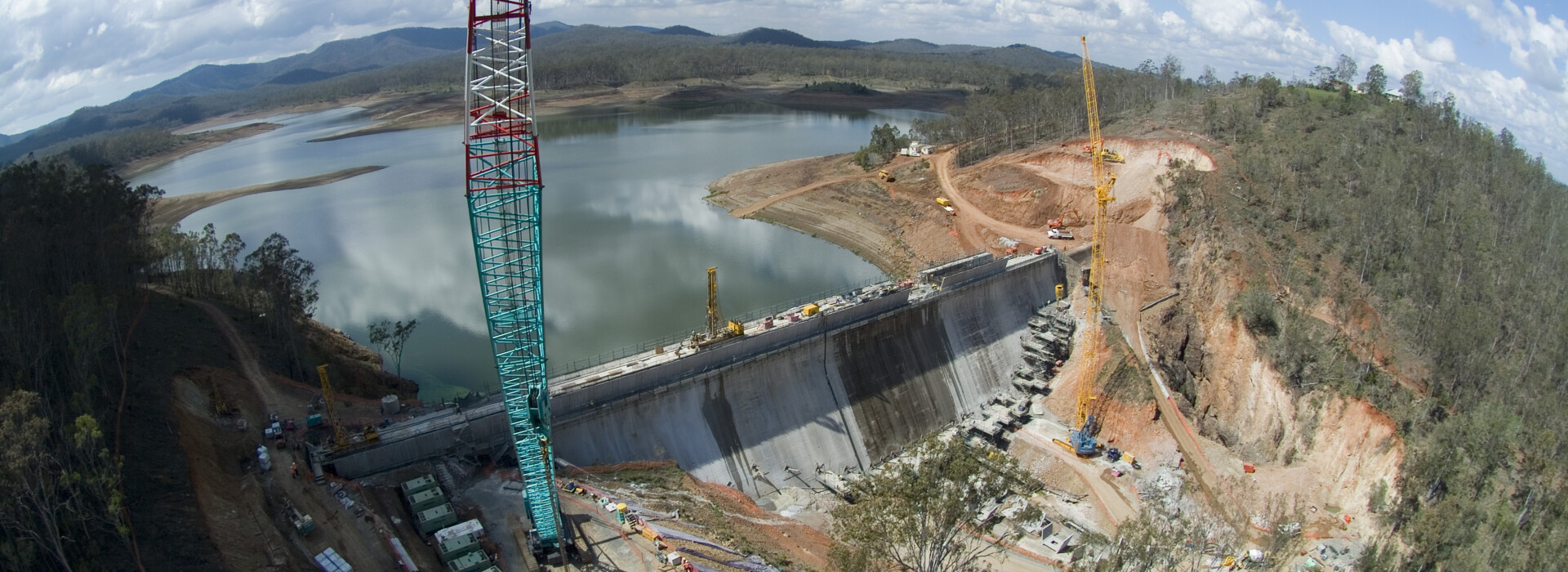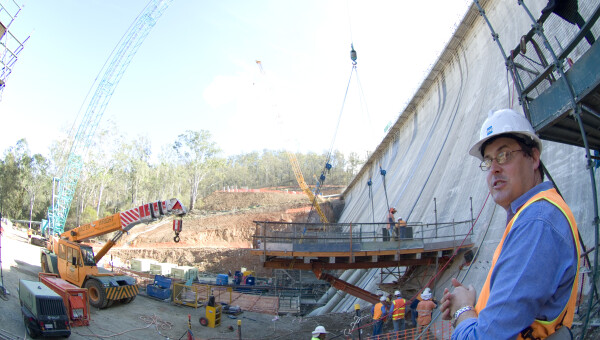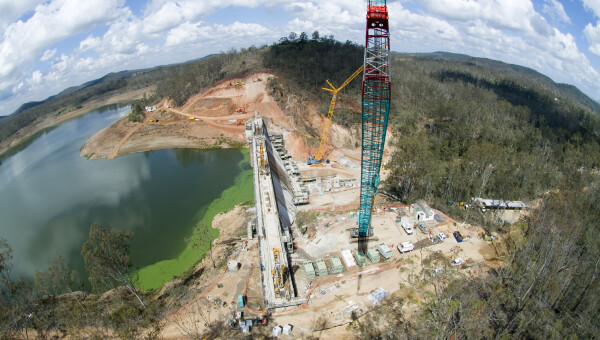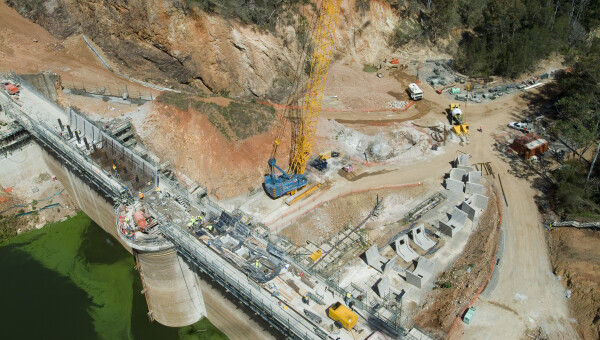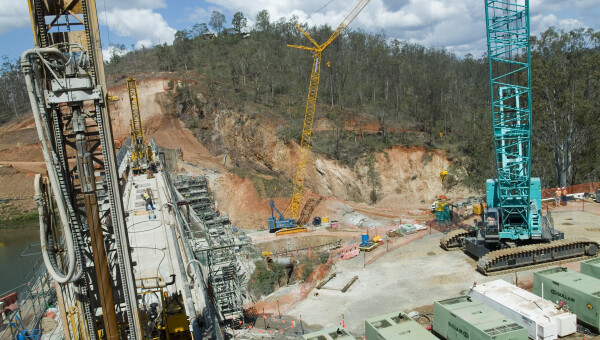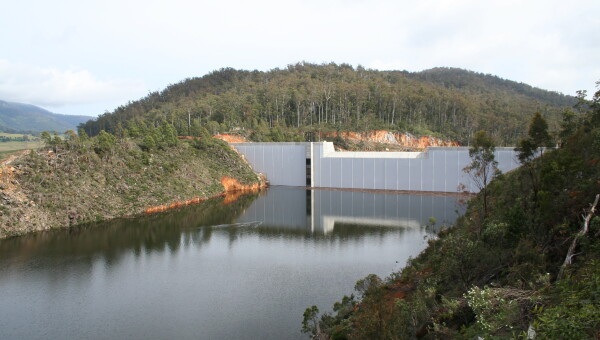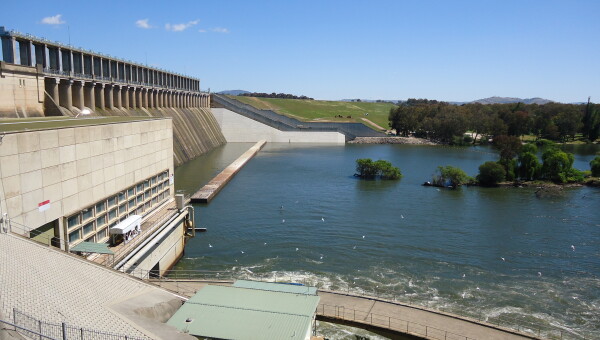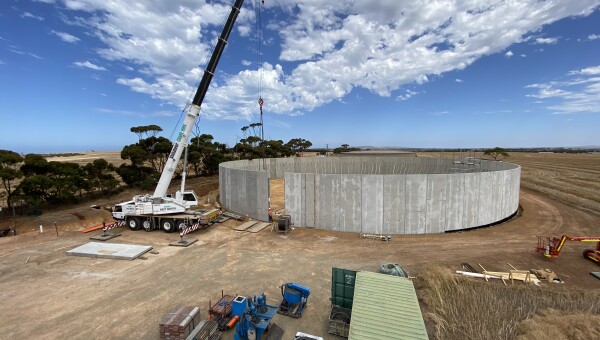|
Customer: Brisbane City Council Contract: Alliance Location: Lake Manchester, Queensland
|
Fast Facts
|
Brisbane Water awarded McConnell Dowell the design and construct alliance contract to upgrade the Lake Manchester Dam, 25km west of Brisbane. The project was a Brisbane City Council (Brisbane Water) initiative to meet current Australian National Committee on Large Dams (ANCOLD) guidelines.
As principal contractor, McConnell Dowell’s challenge was to address inadequate spillway capacity; the potential instability of the dam when water levels approach the crest of the dam; the possibility of washing out the downstream toe of the dam during major flood events; and potential erosion problems in the ‘plunge pool’ of the spillway.
An extensive options analysis concluded that the optimum solution involved:
- Strengthening/securing the existing concrete dam via the installation of 69 post-tensioned ground anchors
- Spillway passive anchors
- Raising the dam wall by 5.8 m and incorporating an anchor transfer beam and parapet wall
- Replacement of the 90-year-old intake/outlet tower and pipework
- Realignment of the spillway entrance conditions
- Construction of a new concrete-lined spillway.
Spillway Work
The old spillway crest, training wall and nearby suspension bridge were demolished, and more than 90,000m3 of earthworks were undertaken to improve the spillway entrance conditions and construct the new concrete-lined spillway. Given the underlying site geology, program constraints and the volume of earthworks, blasting was required.
In an Australian first, McConnell Dowell undertook the sensitive task of rock blasting within 50m of a live concrete gravity dam. Blast monitoring devices located on the dam wall measured the vibrations transmitted to the existing dam structure to ensure the stability of the wall was never compromised. A thorough blast modelling process was carried out prior to each blasting event. In response, a detailed blasting and blast monitoring program was developed to check that the blasting operation could be carried out safely, and that vibrations transmitted to the existing dam structure were kept within the prescribed tolerances. The new spillway, which was constructed of 3,000m3 of reinforced concrete, on slopes up to 45 degrees, was designed to incorporate a flip bucket.
Environmental
McConnell Dowell’s environmental record was a huge success on the project, with multiple initiatives well received within the Alliance and the community. Lungfish were successfully relocated. It should also be noted that we had carried out an initial operation to catch and relocate lungfish from the 'plunge pool' which was considered by the client’s environmental representative to be exhaustive and comprehensive with approval being given to drain and fill the pool. It was during this draining and filling operation that one of our operatives noticed a shadow in the water. Works were then stopped and over the next few days three additional lungfish were captured and relocated. This demonstrates the benefit of the extensive education campaign we undertook on site to inform the workforce of the environmental issues on the project.
Innovation
The inherit instability of the dam structure required an imaginative approach during the optioneering process to explore creative ideas to ascertain the most beneficial solution. Prior to construction, an added innovation was the installation of crack and tilt monitoring devices and alarms. These monitoring devices had remote access capability and provide continuing surety during flood events.
To reduce the risk of working at heights and improve the program, McConnell Dowell developed a new strategy which utilised Precast ‘U’ shape units to construct the crest beam. Units were installed with walkways, handrail sections and sacrificial formwork already in place.
The existing dam wall was cracked badly and had in effect become six separate monoliths. In a world first, McConnell Dowell installed 69 post-tensioned anchors positioned in two planes: a vertical plane of 47 anchors on the crest of the dam wall and an inclined plane of 22 anchors installed at the toe of the dam, at 60 degrees to the horizontal.
A highly fractured and weathered breccia rock was encountered during the drilling of the last 15 m of the dam wall. In lieu of sealing the breccia zone to act as a mass rock block for anchoring, McConnell Dowell changed the construction methodology to a more cost effective and time saving solution. A mass concrete block upstream and downstream of the dam wall provided the alternative to anchoring to resist overturning during a flood event.
Community Engagement
McConnell Dowell developed an extensive engagement and communication plan to work with stakeholders during the design and construction stages of the Lake Manchester Dam upgrade so that issues and concerns were understood and considered, and effective two-way communication was maintained. The diligence shown in engaging the community throughout the project contributed greatly to community satisfaction and the success of the overall project.
Lake Manchester Dam Upgrade Project was winner of the Queensland Civil Contractors Federation Excellence Award.



